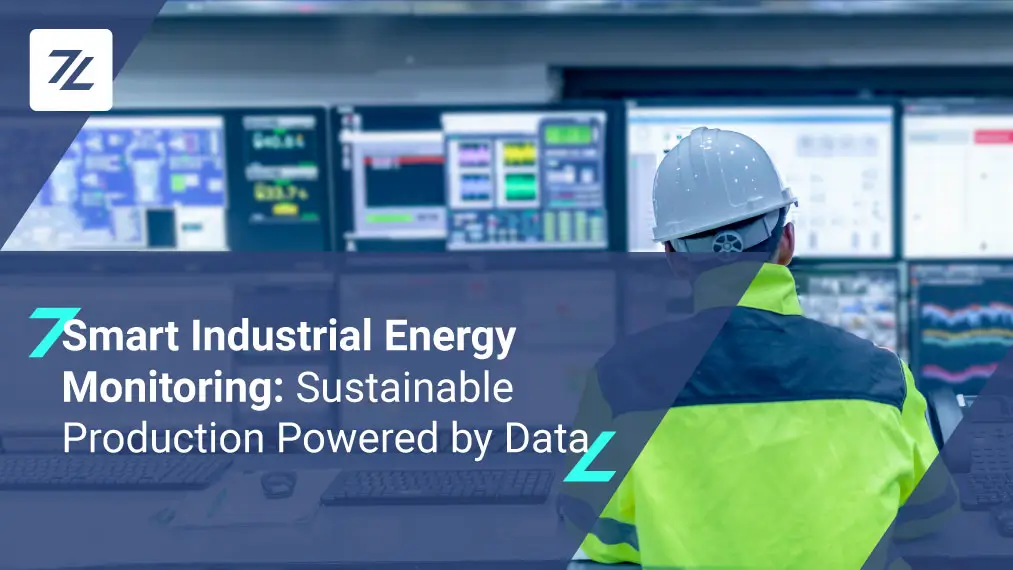The Zerynth IoT & AI Platform offers an advanced feature for monitoring energy consumption, displaying emissions in kg of CO2e generated by factory machinery.
In terms of environmental sustainability, calculating CO2e emissions is crucial for industries aiming to reduce their environmental impact.
With the Zerynth platform, companies can gain a clear and detailed view of their emissions, enabling informed decisions to improve energy efficiency and promote more sustainable business practices.
The Zerynth Platform, with its increasingly advanced features, proves to be a powerful analytical tool, capable of correlating energy consumption with the environmental impact of business operations.
Understanding the CO2e KPI
What is CO2e? CO2e, or CO2 equivalent, is a unit of measure used to quantify the impact of various greenhouse gases (GHG) on global warming. This parameter is expressed in terms of the amount of CO2 based on the Global Warming Potential (GWP) index, which measures the effect of a single greenhouse gas on global warming relative to the effect of CO2 over a specific time frame.
CO2e allows the combined effect of different GHGs, such as methane (CH4), nitrous oxide (N2O), and fluorinated gases, to be expressed in a single standardized metric. This KPI is essential for measuring the carbon footprint, a critical metric for understanding the contribution of different activities to global warming. Monitoring CO2e helps companies and governments make informed decisions to reduce emissions and mitigate climate change, promoting a more sustainable and responsible approach to the environment.
CO2 Emissions from Companies
Energy-related emissions represent on average about 20% of a company’s CO2 emissions. These emissions are divided into two main categories:
- Direct Emissions (Scope 1): These emissions are generated directly by the company’s activities, primarily through the combustion of fossil fuels such as methane gas or diesel. Direct emissions include those from the use of company vehicles, boilers, furnaces, and other equipment that burns fossil fuels. On average, direct emissions account for about 10% of a company’s total emissions.
- Indirect Emissions (Scope 2): These emissions are generated indirectly by the company through the purchase of electricity, heat, or steam. Indirect emissions come from energy suppliers who use fossil fuels like natural gas or coal to produce the energy purchased by the company. Indirect emissions account for the remaining 90% of electricity-related emissions, making this area critical for managing overall CO2 emissions.
Both Scope 1 and Scope 2 emissions are crucial for calculating a company’s carbon footprint and defining emission reduction strategies. Reducing Scope 1 emissions may involve adopting electric or low-emission vehicles, using biofuels, or optimizing the energy efficiency of equipment. For Scope 2 emissions, companies can invest in renewable energy sources such as solar or wind power, or purchase green energy certificates to reduce environmental impact.
Additionally, a company can consider implementing energy management technologies to monitor and optimize energy consumption, thereby reducing both operational costs and CO2 emissions. Energy efficiency strategies, such as thermal insulation, the use of LED lighting systems, and the implementation of energy management systems, can significantly contribute to reducing indirect emissions.
Understanding and managing Scope 1 and Scope 2 emissions is essential for any company aiming to reduce its environmental impact and contribute to global efforts to mitigate climate change.
How to Calculate CO2e
To calculate the CO2e of a greenhouse gas, you need to multiply the mass of the gas by its Global Warming Potential (GWP). The GWP is a fixed value that expresses the global warming effect of any greenhouse gas in terms of CO2. This index was developed by the Intergovernmental Panel on Climate Change (IPCC) to provide a standardized measure that allows comparing the impact of different greenhouse gases on global warming.
The GWP takes into account three main factors:
- Atmospheric Lifetime of the Gas: Some greenhouse gases remain in the atmosphere for very long periods, continuing to affect the climate for decades or even centuries. For example, methane (CH4) has an atmospheric lifetime of about 12 years, while fluorinated gases can persist for thousands of years.
- Radiation Absorption: Each greenhouse gas has a different capacity to absorb and re-emit infrared radiation. Gases like nitrous oxide (N2O) and fluorinated gases have a higher heat retention capacity than CO2, making them more potent in terms of GWP.
- Heat Release: This factor concerns the amount of heat a greenhouse gas can release into the atmosphere, contributing to the greenhouse effect and global warming.
For example, if a company emits 10 tons of methane (CH4), the CO2e will be calculated as follows:
CO2e = 10 tons × 25 (GWP of CH4) = 250 tons of CO2e
This calculation allows summing the effect of different greenhouse gases into a single metric, facilitating the monitoring and management of a company’s or governmental entity’s overall emissions. To obtain an accurate estimate, we use the “electricity mix emission factor,” which represents the average value of CO2 emissions due to electricity production in a specific country.
Moreover, CO2e is an essential parameter for environmental reporting and compliance with international climate change regulations, such as the Paris Agreement.
The Zerynth Platform Calculates Emitted CO2
The new feature of the Zerynth Platform is available in the Machine Monitoring package, thanks to the conversion of energy consumption into emitted CO2:
In the “Status and Alarms” section, a new KPI can be selected directly from the dropdown menu. In the “Consumption” section: all navigable pages, both summary and detailed for machinery/electrical panels.
For example, in the dashboard image for machine monitoring, the “CO2e” column shows the CO2 equivalent emissions for each machine, expressed in kilograms (kg). For instance, the “Ventilation System” (an auxiliary machine) emitted 4.90 kg of CO2e, with a 36% increase compared to the previous period. Among the production machines, “Injection Molding Press 1” recorded 16.12 kg of CO2e, with a 6% increase, while “Injection Molding Press 2” produced 6.76 kg of CO2e, marking a 17% increase. Finally, “Injection Molding Press 3” emitted 5.56 kg of CO2e but with a 43% reduction.
What do these data mean? To improve energy efficiency and reduce CO2e emissions, it is advisable to:
- Perform an audit of the “Ventilation System” to identify inefficiencies and optimize operating settings.
- Examine the operating and maintenance conditions of the injection molding presses, particularly Press 1 and Press 2.
- Implement advanced monitoring technologies.
- Identify and document the best practices of machines with emission reductions to promote their adoption throughout the factory.
- Educate staff on energy efficiency and provide training on how to optimize machine use.
- Evaluate investment in sustainable and low-impact production technologies.
Zerynth Smart Reports
Zerynth Smart Reports are the new product feature naturally integrated into the Zerynth Platform: an innovative AI tool capable of adding value to the data extracted from machinery to prepare for industry 5.0 regulations, ESG, and sustainability reports.
The image shows a report on the company’s environmental impact, highlighting a significant reduction in CO2e emissions. During the period under review, the recorded carbon footprint is 68.81 kg CO2e.
A positive result is noted: compared to the previous month, a lower consumption of 86.02% was recorded, equivalent to 86.01 kWh saved. This reduction led to a decrease in the carbon footprint of 31.82 kg CO2, a positive impact comparable to planting 1 tree or removing 8 cars from the roads.
The use of visual images, such as the tree and cars, helps to concretize the impact of business actions, making the data more accessible and understandable. This type of communication is essential to motivate staff and stakeholders to continue their commitment to reducing emissions and adopting sustainable practices.
These data are crucial for companies seeking to monitor and reduce their carbon footprint, facilitating the comparison of environmental impact between different machines and the adoption of corrective measures to improve energy efficiency and reduce overall emissions.
Share This Story, Choose Your Platform!
Follow Zerynth on
Latest Posts








